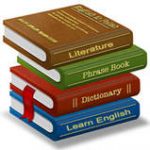The Impact of Quarrying Activities and its Effects on the Environment in Mayo-Belwa Local Government Area: Hosere Joyi Community
1Hammantukur A. & 1Friday A. Ogwu
ABSTRACT
Quarrying is an activity where stones are dug for the purpose of being used in building, making roads through cutting, digging or blasting. Quarrying is a short-term activity with long term effects. It comes along with the promises of wealth and jobs but it also brings high environmental costs. The aim of the paper is to unearth impacts that quarrying activities has and its effects on health of the people living close to the quarries as well as physical environment. The paper utilized multiple data sourcing method: Personal observation, oral interview, questionnaires administration as well as Maps of the study area. A total of 200 questionnaires were administered to residents of the four settlements sampled. The data were analyzed using descriptive statistical analyses. The findings were based on the responses from local residents, quarry workers and owners. The results revealed that there are high rates of environmental problems. This paper concludes that the quarrying activity has affected the peoples’ health, rooms, walls, farmlands, vegetation and surroundings in negative ways. It therefore recommends that the Government and other environmental stakeholders should ensure proper enforcement of the laws governing the Physical planning and regulations on any development of quarrying and mining industries. Government should revoke licenses of the quarry owner who do not adhere to the set laws. Environmental impact assessments and Environmental risk assessments are some of the ways forward.
Key Words: Impact, Quarrying Activities, Environment, Mayo-Belwa



